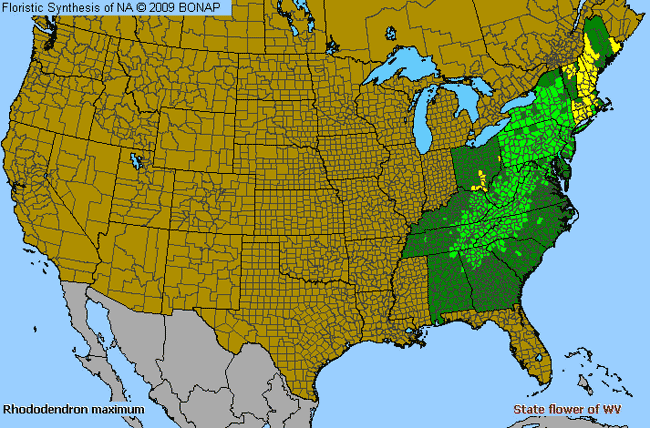Great-Laurel (Rhododendron maximum)

Great-Laurel Species Description

This species is native to North America north of Mexico.
Allergenicity: No allergy has been reported for Great-Laurel (Rhododendron maximum) species.
Pollination: Occurs in following seasons depending on latitude and elevation: Summer.
Angiosperm - Flowering Dicot: Plants in this group have two embryonic leaves (dicotyledons). Examples of dicotyledons are beans, buttercups, oaks, sunflowers, etc.
Tree: A large plant, not exactly defined, but typically over four meters in height, a single trunk which grows in girth with age and branches (which also grow in circumference with age).
Shrub: A woody plant smaller than a tree, and usually with several stems from the same root.
Perennial: Living for many years.
Wetland Plant: Plants growing in aquatic or wetland habitats. These include all known floating, submerged, and emergent taxa, plus those that are found in permanently or seasonally wet habitats.
Woody Stem: Non-herbaceous. Lignified.
Evergreen: Retaining leaves throughout the year including changing seasons.
Great-Laurel Species Usage

Butterfly Plant: A plant that is known to attract butterflies.
Related Links

More Great-Laurel (Rhododendron maximum) imagesby Jessie M. Harris from BONAP











